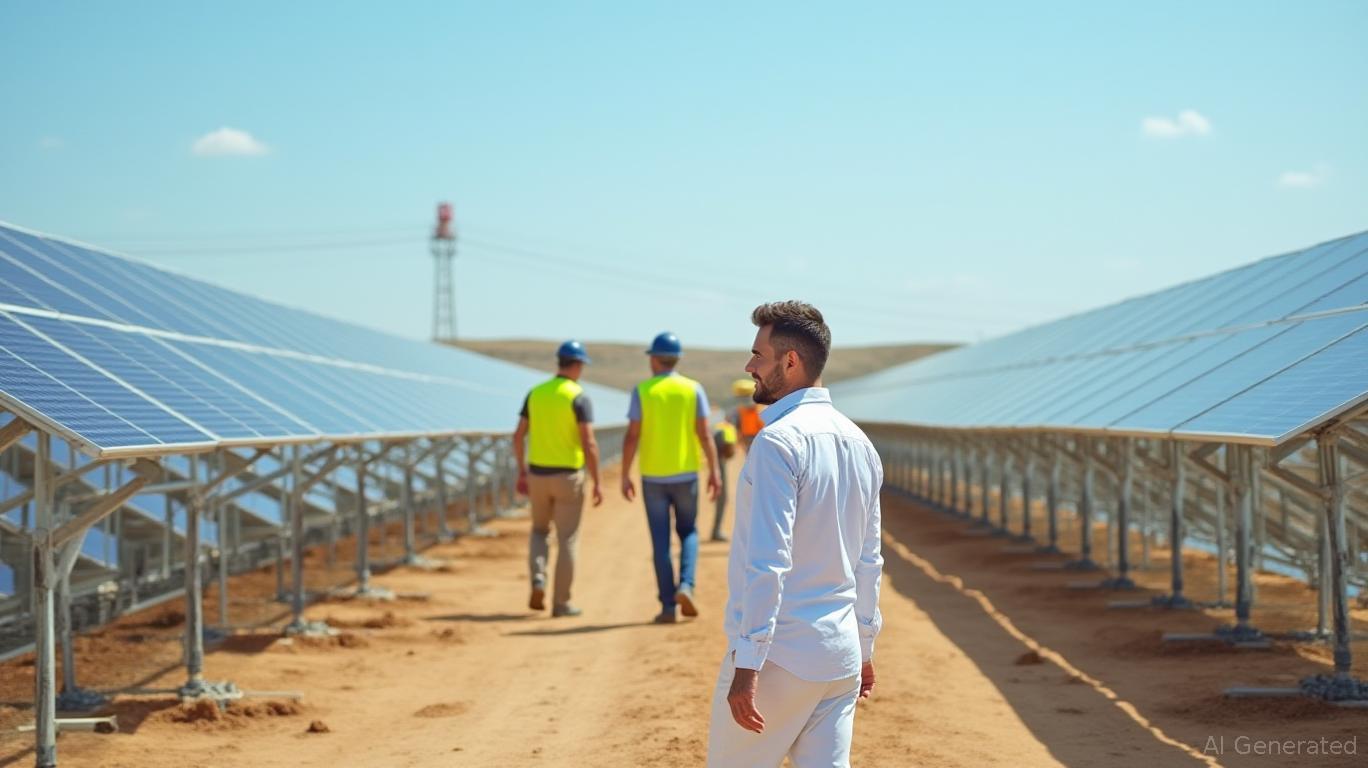Soluna Holdings: Pioneering Renewable-Driven Computing in a Volatile Market
Soluna Holdings (SLNH) is positioning itself as a critical player in the convergence of renewable energy, Bitcoin mining, and artificial intelligence (AI) infrastructure. As global demand for sustainable computing solutions grows and Bitcoin's halving cycle reshapes the mining landscape, Soluna's strategic projects—such as Dorothy 2 and Project Kati—highlight a model that mitigates grid risks, capitalizes on stranded energy, and attracts institutional capital. For investors, the company's scalability and partnerships with hyperscalers could unlock long-term value, despite near-term financial hurdles.
The Scalability Play: Dorothy 2 and Project Kati
Soluna's latest updates underscore rapid progress in its core projects. Phase 1 of Dorothy 2, a 48-MW Bitcoin hosting facility in Texas, has begun customer deployments, with Phase 2 commissioning on track for August 2025. Crucially, the facility's modular design allows incremental scaling, reducing upfront capital risks. Meanwhile, Project Kati—a 166-MW hybrid facility targeting Bitcoin and AI workloads—has secured construction bids for its first 83-MW phase, signaling progress toward full development by late 2025.

The company's behind-the-meter (BTM) co-location model is central to its value proposition. By siting data centers directly with wind and solar farms, Soluna avoids grid interconnection bottlenecks and repurposes curtailed energy—energy produced but not used—that would otherwise go to waste. This approach not only stabilizes grids but also slashes emissions: projects like Dorothy 1A and 1B have already consumed over 112,000 MWh of curtailed energy, reducing carbon footprints by 75% compared to traditional data centers.
Grid Efficiency: A Strategic Advantage
Soluna's proprietary MaestroOS software further distinguishes its offering. Real-time power optimization allows the company to participate in grid services like demand response and frequency regulation, turning its facilities into grid stabilizers. For instance, Dorothy 1A and 1B have participated in Texas's ERCOT 4CP program for three consecutive years, earning revenue while supporting grid reliability.
As Bitcoin's energy demands grow post-halving—where block rewards decrease, raising the bar for cost-efficient mining—Soluna's low-cost, renewable-powered infrastructure becomes increasingly attractive. Institutional miners and hyperscalers seeking to align with ESG goals may prioritize partnerships like Soluna's, which offers both cost savings and sustainability credentials.
Hyperscaler Partnerships and AI Expansion
While Bitcoin remains a core focus, Soluna is diversifying into AI and high-performance computing (HPC) through projects like Grace (a 2-MW pilot) and Kati. The termination of its GPU-as-a-Service deal with HPE, cited as due to market oversupply, underscores the need for direct infrastructure control. By owning facilities like Kati, Soluna can cater to hyperscalers requiring scalable, low-latency computing at the edge of renewable energy grids.
The company's pipeline also includes Project Annie, a 75-MW solar co-located data center, and Project Rosa (187 MW), which could further solidify its position as a renewable energy computing leader. These projects align with hyperscaler trends toward distributed, sustainable infrastructure, a shift accelerated by rising energy costs and regulatory pressure.
Financial Challenges and Investment Considerations
Despite operational progress, Soluna faces headwinds. Its stock has plummeted 75% over the past year, and it received a Nasdaq non-compliance notice due to its $0.52 stock price, with a November 2025 deadline to regain compliance. Debt financing from Galaxy Digital ($5 million) and an at-the-market equity offering ($3.75 million) provide short-term liquidity, but scaling revenue will require rapid execution on its pipeline.
Investors should monitor key milestones: Dorothy 2's Q4 2025 energization, Kati's substation construction start, and Annie's land/power agreements. If Soluna can deliver on these, its model—combining grid services, curtailed energy monetization, and hyperscaler partnerships—could generate high-margin revenue streams.
Conclusion: A High-Risk, High-Reward Bet on Sustainable Computing
Soluna's vision of turning renewable energy into a “global superpower” through computing infrastructure is compelling. Its projects address critical pain points: stranded energy waste, grid instability, and institutional demand for ESG-aligned tech. However, execution risks remain, particularly around capital formation and stock compliance.
For investors with a long-term horizon and tolerance for volatility, SLNH offers exposure to a nascent but growing sector. If the company can scale its 1-GW AI-ready capacity target, it could displace 48 million metric tons of CO₂ and secure partnerships with hyperscalers like Microsoft or Alphabet. Near-term, the stock's valuation—currently at a 1.36 financial health score—demands caution, but the strategic blueprint is clear: renewables + compute + grid services = sustainable value creation.
In a world hungry for scalable, green infrastructure, Soluna's model may yet prove prescient—if it can navigate the present storm.

Comments
No comments yet